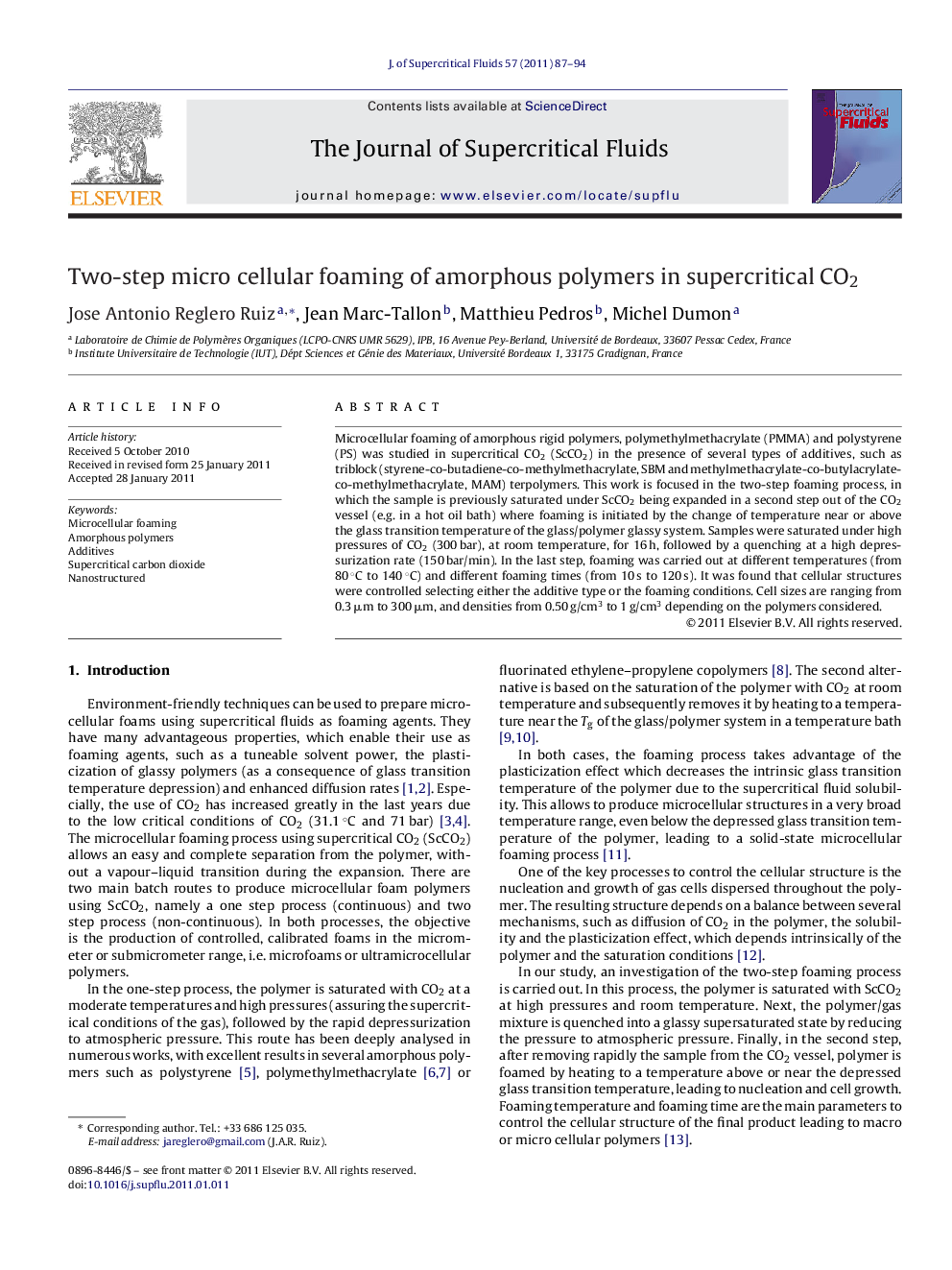| Article ID | Journal | Published Year | Pages | File Type |
|---|---|---|---|---|
| 231431 | The Journal of Supercritical Fluids | 2011 | 8 Pages |
Microcellular foaming of amorphous rigid polymers, polymethylmethacrylate (PMMA) and polystyrene (PS) was studied in supercritical CO2 (ScCO2) in the presence of several types of additives, such as triblock (styrene-co-butadiene-co-methylmethacrylate, SBM and methylmethacrylate-co-butylacrylate-co-methylmethacrylate, MAM) terpolymers. This work is focused in the two-step foaming process, in which the sample is previously saturated under ScCO2 being expanded in a second step out of the CO2 vessel (e.g. in a hot oil bath) where foaming is initiated by the change of temperature near or above the glass transition temperature of the glass/polymer glassy system. Samples were saturated under high pressures of CO2 (300 bar), at room temperature, for 16 h, followed by a quenching at a high depressurization rate (150 bar/min). In the last step, foaming was carried out at different temperatures (from 80 °C to 140 °C) and different foaming times (from 10 s to 120 s). It was found that cellular structures were controlled selecting either the additive type or the foaming conditions. Cell sizes are ranging from 0.3 μm to 300 μm, and densities from 0.50 g/cm3 to 1 g/cm3 depending on the polymers considered.
Graphical abstractFigure optionsDownload full-size imageDownload as PowerPoint slideResearch highlights► Nanostructured block copolymers act as nucleating agents for foaming processes in amorphous polymers. ► PS and PMMA can be foamed using two-step ScCO2 foaming processes. ► Adding nanostructured block copolymers in amorphous matrixes low-density nanocellular foams are obtained.
